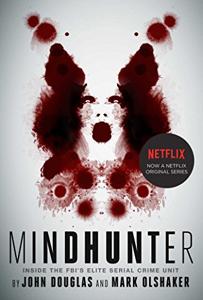
Want to learn the ideas in Mindhunter better than ever? Read the world’s #1 book summary of Mindhunter by John E. Douglas and Mark Olshaker here.
Read a brief 1-Page Summary or watch video summaries curated by our expert team. Note: this book guide is not affiliated with or endorsed by the publisher or author, and we always encourage you to purchase and read the full book.
Video Summaries of Mindhunter
We’ve scoured the Internet for the very best videos on Mindhunter, from high-quality videos summaries to interviews or commentary by John E. Douglas and Mark Olshaker.
1-Page Summary of Mindhunter
Overall Summary
Mindhunter: Inside the FBI’s Elite Serial Crime Unit is a book by John Douglas and Mark Olshaker that details Mr. Douglas’s life and his work with the FBI, as well as psychological profiling. The book focuses on Mr. Douglas’ development of this technique through interviews with some of America’s most notorious serial killers in order to understand how criminals think.
Douglas joined the FBI in 1970. He was assigned to Detroit, where he worked as a rookie agent and investigated crimes such as bank robberies and extortion. His interrogations of perpetrators sparked his interest in criminal behavior. He noticed patterns that repeated themselves throughout cases that he worked on, which led him to believe that there were certain motivations behind crime. In his second year with the bureau, Douglas was assigned to Milwaukee, where he continued working on the Reactive Crimes Unit. He also did some work with SWAT (Special Weapons And Tactics) and recruited new agents for the bureau while training others in various skills needed for their jobs. Douglas built up a reputation during this time by having success solving cases quickly using evidence or what would later be called “signatures.” The FBI sent him to a hostage negotiation course after they recognized his talent at negotiating with criminals over phone lines without putting anyone at risk. This changed the trajectory of his career because it showed him how important communication is when dealing with people who have differing opinions from yours—or even those who are willing to kill you if you don’t meet their demands fast enough or give them what they want right away.
Douglas met the members of the Behavioral Science Unit at FBI Academy, who were interested in his work. He transferred to Quantico and teamed up with Robert Ressler, who was also conducting research on criminal behavior. They traveled around the country training police departments and conducted interviews with criminals like Ed Kemper, Charles Manson, Arthur Bremmer, Sarah Jane More, Lynette Fromme and Monte Rissell. Through these informal interviews they gained a better understanding of criminal behavior. A connection to Roy Hazelwood enabled them to meet Dr. Ann Burgess from University of Pennsylvania’s psychiatric mental health nursing department as well as other experts in their field through which they received funding for their project known formally as Criminal Personality Research Project (CPRP).
Douglas and his team studied violent criminals, such as serial killers and rapists. They identified patterns in the behavior of these offenders, which led to effective interrogation strategies that helped bring them to justice. Understanding their character allowed Douglas to predict future actions of those still on the loose.
While Douglas was working on his research, he also had a full-time job as the FBI’s only profiler. He worked with police departments all over the country and proved that profiling was an effective tool in many cases, including those of Robert Hansen, Wayne Williams, and Larry Gene Bell. His hard work paid off when the FBI increased their staff in the Behavioral Science Unit and promoted him to unit chief. However, his success came at a cost; his intense schedule eventually took its toll on him physically and emotionally. His personal life also suffered; he divorced after 23 years of marriage. Even though Douglas retired from the FBI in 1996, his legacy lives on via Mindhunter, which he co-wrote with Mark Olshaker.
Prologue: “I Must Be in Hell”
The prologue to Mindhunter begins with a description of author John Douglas’s near-death experience in Seattle. Three weeks before this event, Douglas was lecturing at the NYPD about his cases and how he helped them solve their crimes. He traveled all over the country to help local law enforcement catch serial killers, but he had been feeling sick for some time. After giving another lecture in Seattle, he went back to his hotel room and collapsed on the floor from a fever that reached 107 degrees Fahrenheit (41 Celsius). His fellow agents kicked down his door and found him seizing on the floor. He was taken to Swedish Hospital where doctors told him that it looked like there might be permanent damage if he survived at all; they said that if he did survive, then it would probably cause permanent blindness or brain damage. They put Douglas into a coma for seven days while they tried everything they could think of to save him; after one week, however, he came out of the coma and began recovering slowly from viral encephalitis—a disease caused by an infection of certain viruses in your brain tissue—and received several months off work as part of his recovery process.





